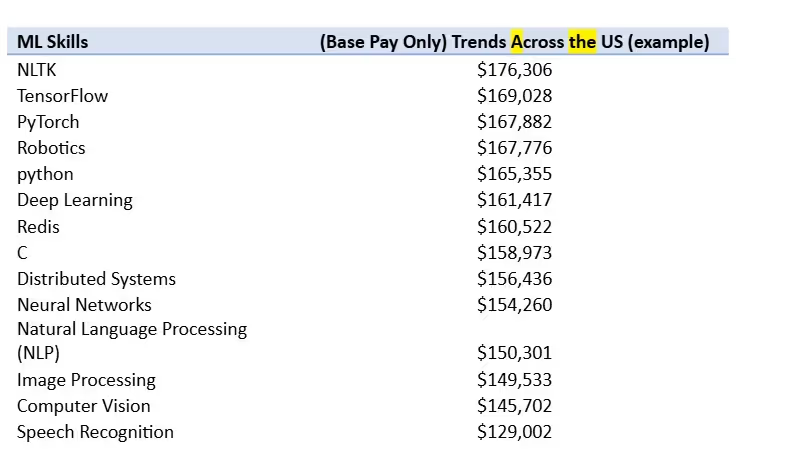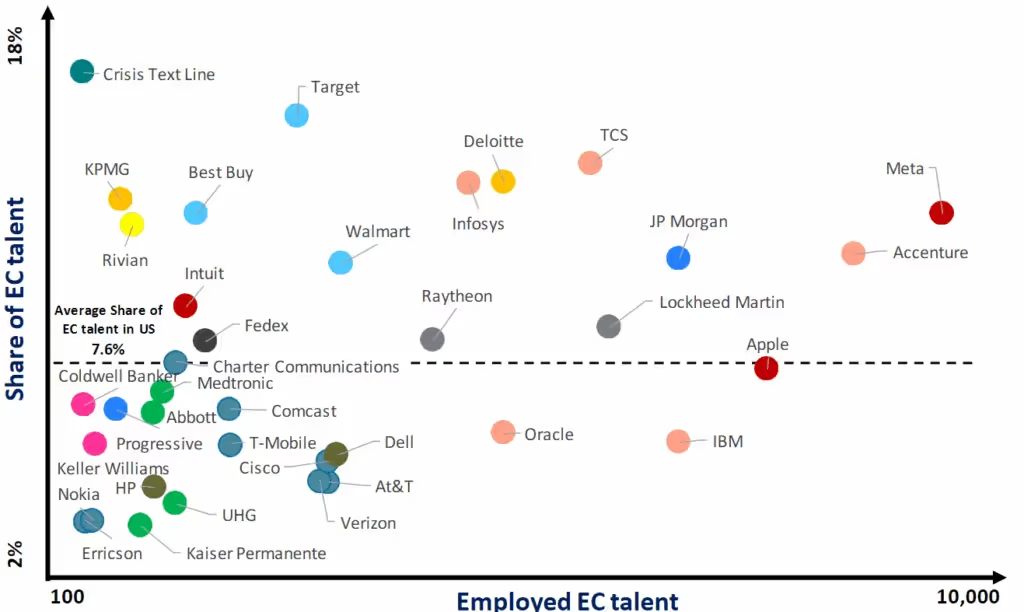Workforce Planning Strategies to Handle Global Labor Fluctuations and Geo-Political Impacts
We are in an unprecedented era of geo-political tensions. Draup believes that the technology talent ecosystem in Ukraine is one of the finest in the world; we hope the situation resolves soon for the greater good of humanity and as well as the much-required advancement in the AI age. This blog is designed to help you think through a talent strategy that can handle such labor shock events in the future.
Post pandemic labor sentiments are fascinating to watch across the Globe. There are almost no discussions and postulates on Automation taking over human labor. Around this time, we expected 85% of the call center interactions to happen through Chatbots. Today, 50% of the support interactions are still through voice-based channels across all industries. Automation has impacted, but the complexity of the problems we handle has also increased. On the one hand, Automation seems to be threatening opportunities of the labor force, and on the other hand, we seem to be needing more labor. This is referred to as Moravec’s paradox in labor theory – first outlined by Hans Moravec at Carnegie Mellon University in 1988. (this wisdom still holds). Automation has a degree of slowness (it is tough to teach the machines about cognitive decision-making – something humans do well). But the other more significant aspect is human desire. Continuous and ongoing innovation to do better and bigger things increase the Continuum span of the company. Look at General Motors as an example. General Motors aims to turbocharge its non-vehicle revenue by introducing dozens of new fee-based digital features by 2026, including one enabling a car to predict when it will need maintenance and optimize the fees around that. Bigger screens in Automobiles provide an opportunity to introduce more services. Such is the desire of companies, and these changes are happening across all industries.
Understanding labor dynamics and the social aspects of employee preferences have become highly critical. We came across an interesting study conducted by Emily C Bianchi from Emory University titled The Bright Side of Bad Times: The Affective Advantages of Entering the Workforce in a Recession. The author studied the GSS social survey data and developed models to show that the labor pool that graduated around recession times pay more attention to the non-monetary benefits of a job. This is a fascinating finding. If we can assemble more such studies, we can understand the deeper meaning of the labor pool.
Under such complex Geo-Political and Labor scenarios, your tangible assets are Workforce Planners and Recruiters. The two functions must establish a two-way agile communication mechanism and develop a solid talent strategy. This is the premise under which Draup is developed. Such a strategy will help you better handle global labor fluctuations and geo-political impacts. A comprehensive workforce planning strategy means that we understand the various locations well. By doing such systemic analysis and developing the talent pipeline and reserves, companies can better handle labor shocks of the future.
We are in an unprecedented era of geo-political tensions. Draup believes that the technology talent ecosystem in Ukraine is one of the finest in the world; we hope the situation resolves soon for the greater good of humanity and as well as the much-required advancement in the AI age. This blog is designed to help you think through a talent strategy that can handle such labor shock events in the future.
Post pandemic labor sentiments are fascinating to watch across the Globe. There are almost no discussions and postulates on Automation taking over human labor. Around this time, we expected 85% of the call center interactions to happen through Chatbots. Today, 50% of the support interactions are still through voice-based channels across all industries. Automation has impacted, but the complexity of the problems we handle has also increased. On the one hand, Automation seems to be threatening opportunities of the labor force, and on the other hand, we seem to be needing more labor. This is referred to as Moravec’s paradox in labor theory – first outlined by Hans Moravec at Carnegie Mellon University in 1988. (this wisdom still holds). Automation has a degree of slowness (it is tough to teach the machines about cognitive decision-making – something humans do well). But the other more significant aspect is human desire. Continuous and ongoing innovation to do better and bigger things increase the Continuum span of the company. Look at General Motors as an example. General Motors aims to turbocharge its non-vehicle revenue by introducing dozens of new fee-based digital features by 2026, including one enabling a car to predict when it will need maintenance and optimize the fees around that. Bigger screens in Automobiles provide an opportunity to introduce more services. Such is the desire of companies, and these changes are happening across all industries.
Understanding labor dynamics and the social aspects of employee preferences have become highly critical. We came across an interesting study conducted by Emily C Bianchi from Emory University titled The Bright Side of Bad Times: The Affective Advantages of Entering the Workforce in a Recession. The author studied the GSS social survey data and developed models to show that the labor pool that graduated around recession times pay more attention to the non-monetary benefits of a job. This is a fascinating finding. If we can assemble more such studies, we can understand the deeper meaning of the labor pool.
Under such complex Geo-Political and Labor scenarios, your tangible assets are Workforce Planners and Recruiters. The two functions must establish a two-way agile communication mechanism and develop a solid talent strategy. This is the premise under which Draup is developed. Such a strategy will help you better handle global labor fluctuations and geo-political impacts. A comprehensive workforce planning strategy means that we understand the various locations well. By doing such systemic analysis and developing the talent pipeline and reserves, companies can better handle labor shocks of the future.
In this email, we have highlighted a few components that may be useful for you.
Component1: Experienced hires wage differential by skill. Enterprises should have a clear view of their premium skills and plan to source them in multiple locations. Specific skills seem to command more skill wage premium within each job role. For example, we looked at a US dataset and ML engineer as an experiment (just on the base pay trends). The skills related to Deep Learning seem to command a higher premium than some of the earlier day skills like data annotation. This is fascinating where the role is clearly behaving differently for different skills from a wage standpoint. There are several similar dynamics like that across roles. So it is essential to model the specialty areas you are seeking. For example, an HR program manager with AI systems integration skills may act differently from the standard HR program manager for systems

Component2: Early Career Simulations. In one of the projects, we studied the taxonomy of the job roles of a client and suggested that more early-career roles be created in specific markets. When we looked at across targeted Digital roles in the US markets, we see remarkable differences in how companies use early career talent (0 to 3 years in this case). This is a good study that can be conducted to see how you are leveraging early career talent compared to industry peers. (not a comprehensive analysis, and please treat it as directional analysis)

Component3: Reskilling Viability Models
Any labor shocks can be handled reasonably if we have a proper Reskilling Model in place. A Red, Yellow, and Green model to predict possible transitions will be helpful. Post the creation of platforms like Automation Anywhere; there is demand for Process Knowledge. Transforming your customer ops into these resources will pay off the organizations in a significant way. Not all moves will be optimal, but having a map to target the Green Zones (feasible zones) will help in talent planning

We have highlighted a few components that may be useful for you.
Component 1: Experienced hires wage differential by skill. Enterprises should have a clear view of their premium skills and plan to source them in multiple locations. Specific skills seem to command more skill wage premium within each job role. For example, we looked at a US dataset and ML engineer as an experiment (just on the base pay trends). The skills related to Deep Learning seem to command a higher premium than some of the earlier day skills like data annotation. This is fascinating where the role is clearly behaving differently for different skills from a wage standpoint. There are several similar dynamics like that across roles. So it is essential to model the specialty areas you are seeking. For example, an HR program manager with AI systems integration skills may act differently from the standard HR program manager for systems.

Component 2: Early Career Simulations. In one of the projects, we studied the taxonomy of the job roles of a client and suggested that more early-career roles be created in specific markets. When we looked at across targeted Digital roles in the US markets, we see remarkable differences in how companies use early career talent (0 to 3 years in this case). This is a good study that can be conducted to see how you are leveraging early career talent compared to industry peers. (not a comprehensive analysis, and please treat it as directional analysis).

Component 3: Reskilling Viability Models
Any labor shocks can be handled reasonably if we have a proper Reskilling Model in place. A Red, Yellow, and Green model to predict possible transitions will be helpful. Post the creation of platforms like Automation Anywhere; there is demand for Process Knowledge. Transforming your customer ops into these resources will pay off the organizations in a significant way. Not all moves will be optimal, but having a map to target the Green Zones (feasible zones) will help in talent planning.











.svg)




















.svg)





.svg)
